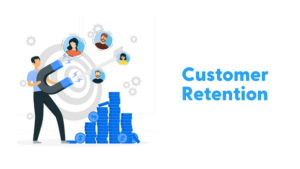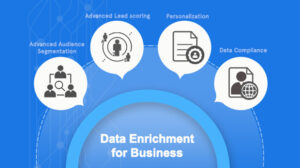If you are reading this, you are probably looking for a way to transfer data from Google Analytics to Snowflake quickly & efficiently. In this article, we will talk about why using Google Analytics is essential and how you can get data from all your apps and tools together in one place without having to write any code.
The choice for eCommerce businesses when it comes to marketing and selling their merchandise is growing every day. eCommerce vendors have to decide on what channels they want to sell on, which channels they want to spend their advertising dollars on, whether the channels include:
-
Branded Websites
- In some cases branded eCommerce sites per country
-
Marketplaces
- In many instances, marketplaces per country
-
Retail Stores
- to create an omnichannel presence and to engage buyers where the shop
Complexity increases with the addition of every sales channel. For instance, if we consider marketing channels available to support online business, you will find a choice of:
- Social Media ads – Some platforms include Facebook Ads, Instagram, LinkedIn, Twitter, and others
- Digital ads and re-marketing – Criteo, Taboola, Outbrain, and others
- PPC – Google ads, Bing ads, and others
- Email – Mailchimp, Klaviyo, Hubspot, and others
- Podcasts
- Affiliate – Refersion, CJ Affiliates
- Influencer marketing
- Offline marketing and more
In the competitive digital landscape that we live in, it has become imperative that eCommerce businesses of all sizes that aspire to grow and stay profitable have to look into their data deeply and leverage this for growth.
With the increase in competition, eCommerce Companies should strive to be more data-driven for various reasons. Some of these reasons include:
- Understanding the balance between demand and supply,
- Understanding customer lifetime value (LTV)
- Segmenting customer base for effective marketing
- Finding opportunities to reduce wasteful spend
- Optimizing digital assets to maximize revenue for the same marketing spend,
- Improving ROIs on Ad campaigns and
- Offering an engaging and seamless experience for customers in every channel that the customer engages with the brand.
Businesses these days need to be efficient in terms of their data analysis. They are struggling to make sense of the data generated from various applications and tools used to manage different processes efficiently.
Due to the reasons highlighted above, any eCommerce business typically operates at least 10-15 different software/platforms to deliver on their customer expectations. As a result, data silos are created, which makes it more difficult to consolidate data and use the data for reporting, operations, analysis, and taking informed forward-looking decisions.
Analytics platforms like Google Analytics generate a substantial amount of data like Traffic, Audience Demography, User Behaviour, Clicks, Bounce Rates, Time on Site, Traffic Source, Browsing Device and much more. Additionally, eCommerce companies that sell globally often end up having separate views or dashboards for each country-specific website. It is quite normal to have marketers, product managers, and eCommerce managers needing to review data from multiple GA assets. Imagine a brand selling in three countries; they would have different marketing channels with varying demographics of the audience for each country – driving traffic to a separate website.
For example:
https://myshop.us for USA
https://myshop.de for Germany
https://myshop.fr for France
It would be tough to get the complete picture of the business in one place if you do not consolidate data generated in tools used by multiple departments. However, it takes a considerable amount of time, skills, and resources to extract all data manually. At times, it is almost impossible, leaving analysts with little time or scope to focus on analysis.
These separate silos make a comprehensive analysis of the business data, challenging. Data Savvy eCommerce businesses try to reduce the effort of reporting and analysis by integrating data from all these channels into a cloud data warehouse like Snowflake. By taking this step, the process of reporting and analysis becomes easy, inexpensive, and consequently done more frequently.
In this post, we will be looking at methods to replicate data from Google Analytics to Snowflake.
Before we start exploring the process involved in data transfer, let us spend some time looking at these individual platforms.
Google Analytics Overview
Google Analytics is the most popular Business Analytics tool used by Brands. It is free to use and provides detailed reporting and analysis resources for all sizes of websites. Google Analytics helps users to track the traffic of their websites, identify the user experience with their pages and create custom reports based on their company’s needs. Google Analytics gathers, administers, and centralizes website data. This data can be used to understand how visitors interact with the website, blogs, impact of advertisements, videos, and social media on revenue, popular products, and much more. Users can leverage the Google Analytics data for analysis and in the generation of transformational insights. Companies can enhance their marketing strategies and experiment with their web content, website, products, pricing and much more by using the insights. People who use Google Analytics like using it because :
Track many websites in a single dashboard.
- It is a free and secure tool.
- Integrating with the website is straightforward
- Google Analytics is integrated with the Google Ads platform.
- Ability to create customization dashboards based on various metrics like number of users, number of events, number of page views, filter based on geography.
- Ability to generate custom reports based on button clicks, search terms, top events, and application pages.
Snowflake Overview
Snowflake is a cloud-based data warehouse created by three data warehousing experts at Oracle Corporation in 2012. Snowflake Computing, the vendor behind the Snowflake Cloud Data Warehouse product, raised over $400 million over the past eight years and acquired thousands of customers. One might wonder if another data warehouse vendor is needed in an already crowded field of traditional data warehousing technologies like Oracle, Teradata, SQL Server, and cloud data warehouses like Amazon Redshift and Google BigQuery. Well, the answer is the disruption caused by cloud technologies and cloud opportunities for new technology companies. Public clouds enabled startups to shed past baggage, learn from the past, challenge the status quo, and take a fresh look at cloud opportunities to create a new data warehouse product. You can read this article to understand the core technology components that make up this modern, cloud-built data warehouse for consumers of cloud technologies.
You can register for a $400 free trial of Snowflake within minutes. This credit is sufficient to store a terabyte of data and run a small data warehouse environment for a few days.
Why Do Businesses Need to Replicate Google Analytics to Snowflake
Let’s take a simple example to illustrate why data consolidation to Snowflake can be helpful for an eCommerce business.
A global company sells its products in different countries through various channels like online marketplaces like Alibaba, Amazon or their website using platforms like Shopify, Unicommerce runs different marketing campaigns in different channels in each country.
Now let us say that the company wants to calculate its overall business profits. We all know that :
Profits/Losses = Sales – Expenses
The sales data will come from Shopify as well as from Amazon and Alibaba. Thus, it becomes a nearly impossible task to pull all of these data from multiple platforms for each country separately, and then analyze all of this data together with the expense data and calculate profits. It involves a lot of working hours which costs money, and there is usually a time lag involved, which reduces the accuracy of the analysis and its effectiveness as the data is not analyzed in real-time. Consolidate all of the data in a data warehouse like Snowflake to simplify the process.
If this company then wants to optimize its profits, they need to increase sales and decrease expenses. Hence they need to associate the traffic flowing from their marketing campaigns to the purchases taking place to understand which marketing activity is generating better ROIs and which needs improvement, this is where Google Analytics comes into play. It captures the flow of traffic from different channels into a website. But Google Analytics fails to capture the sales data accurately and the data from marketing tools like target audience, Ad impressions. To understand the sales funnel clearly, and give accurate attributions to the marketing activities, it becomes vital to check the data from the various data sources in use manually and then tally that data to the data coming from Google Analytics to gain meaningful insights. Hence, this becomes a difficult task when done manually on a scale.
Using Only Google analytics, it is not possible to :
- Calculate Customer LTV
- Get accurate e-Commerce or sales data
- Give accurate attributions to marketing channels
- Analyze customer feedback
- View multiple website data silos together
- Analyze shipping, logistics, inventory and other data
- View and analyze data generated from third-party tools and software
For these reasons, top companies consolidate all of their data from Google Analytics and other apps and tools into a data warehouse like Snowflake to analyze the data and generate reports at a rapid pace.
Replicate Google Analytics Data to Snowflake
There are two board ways to pull data from any source to any destination. The decision is always a build vs buy decision. Let us look at both these options to see which option provides the business with a scalable, reliable, and cost-effective solution for reporting and analysis of Google Analytics data. The following data is available from Google Analytics for replication to a data warehouse. You can also retrieve the data from Snowflake any time you want.
Build your Data Pipeline
To build support for extracting data using Google Analytics APIs, the developer or analyst will have to follow the steps.
- Register with the Amazon Developer Portal
- Create API tokens to pull data from Google Analytics
- Read and understand API documentation thoroughly
- Handle Google Analytics rate limits to avoid getting blocked by google or getting data slowly
- Understand what metrics and dimensions can be used to pull data using the Dimensions and Metrics explorer tool provided by Google.
- Handle different data types that are used in the KPI’s for efficient data storage
- Schedule the API calls frequently to pull new data that is generated in the platform.
- Handle errors, changes and upgrades to the APIs, which happen quite frequently
- Handle notifications so that you were made aware when the script has failed.
- Handle incremental data extraction and avoid full data extraction with every replication task
In addition to the steps listed above, developers also have to figure out how to handled sampling-related issues that are common with Google Analytics. You can read more about the infamous Google Analytics sampling here.
Once you have automated the extract of data from Google Analytics and you manage to save the data as a CSV or a JSON file, you can use the file to load Google Analytics data into Snowflake. You can leverage Snowflake loading routines to accomplish the task of loading data.
- Loading CSV data
- Loading JSON data
Use a Cloud Data Pipeline
Building support for APIs is not only tedious, but it is also extremely time-consuming, difficult, and expensive. Engaging analysts or developers in writing support for these APIs takes away their time from more revenue-generating endeavours. Leveraging an eCommerce data pipeline like Daton, significantly simplifies and accelerates the time it takes to build automated reporting. Daton supports automated extraction and loading of Google Analytics data into cloud data warehouses like Google BigQuery, Snowflake, Amazon Redshift, and Oracle Autonomous DB.
Configuring data replication on Daton on only takes a minute and a few clicks. Analysts do not have to write any code or manage any infrastructure but can still get access to their Google Analytics data in a few hours. Any new data is generated automatically replicated to the data warehouse without any manual intervention.
Daton supports replication from Google Analytics to a cloud data warehouse of your choice, including Snowflake. Daton’s simple and easy to use interface allows analysts and developers to use UI elements to configure data replication from Google Analytics data into Snowflake. Daton takes care of
- Authentication
- Rate limits,
- Sampling,
- Historical Data Load,
- Incremental Data Load,
- Table Creation,
- Table Deletion,
- Table Reloads,
- Refreshing Access Tokens,
- Notifications
And many more important functions that are required to enable analysts to focus on analysis rather than worry about the data that is delivered for analysis.
Daton – The Data Replication Superhero
Daton is a fully-managed, cloud data pipeline that seamlessly extracts relevant data from many data sources for consolidation into a data warehouse of your choice for more effective analysis. The best part analysts and developers can put Daton into action without the need to write any code.
Here are more reasons to explore Daton:
- Support for 100+ data sources – In addition to Bing Ads, Daton can extract data from a varied range of sources such as Sales and Marketing applications, Databases, Analytics platforms, Payment platforms and much more. Daton will ensure that you have a way to bring any data to Snowflake and generate relevant insights.
- Robust scheduling options allow users to schedule jobs based on their requirements using simple configuration steps.
- Support for all major cloud data warehouses including Google BigQuery, Snowflake, Amazon Redshift, Oracle Autonomous Data Warehouse, PostgreSQL and more.
- Low Effort & Zero Maintenance – Daton automatically takes care of all the data replication processes and infrastructure once you sign up for a Daton account and configure the data sources. There is no infrastructure to manage or no code to write.
- Flexible loading options allow you to optimize data loading behaviour to maximize storage utilization and also easy of querying.
- Enterprise-grade encryption gives your peace of mind
- Data consistency guarantee and an incredibly friendly customer support team ensure you can leave the data engineering to Daton and focus instead of analysis and insights!
- Enterprise-grade data pipeline at an unbeatable price to help every business become data-driven. Get started with a single integration today for just $10 and scale up as your demands increase.
We Saras Analytics, can help with our eCommerce-focused Data pipeline (Daton) and custom ML and AI solutions to ensure you always have the correct data at the right time. Request a demo and envision how reporting is supercharged with a 360° view.
For all sources, check our data connectors page.
Other Articles by Saras Analytics,













